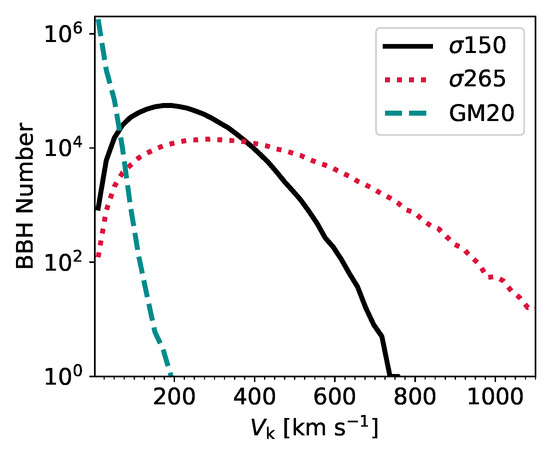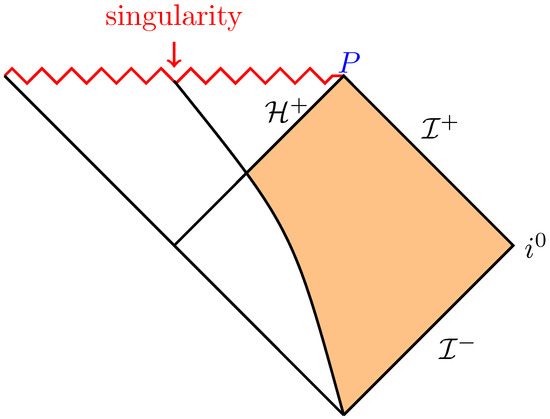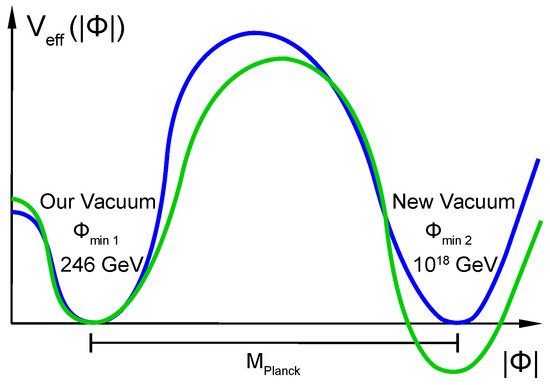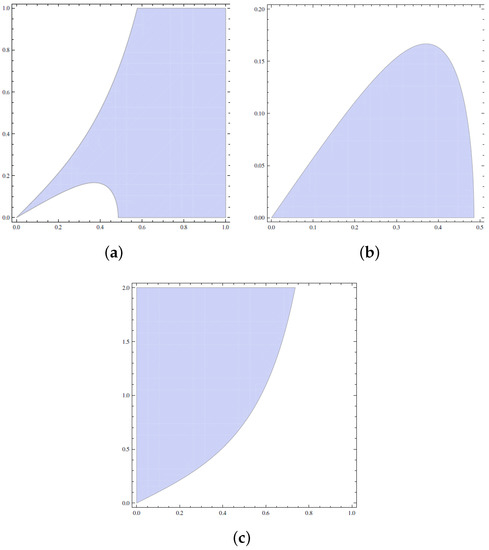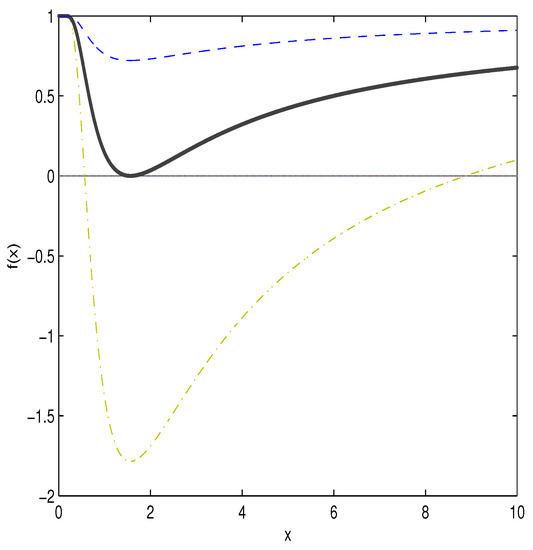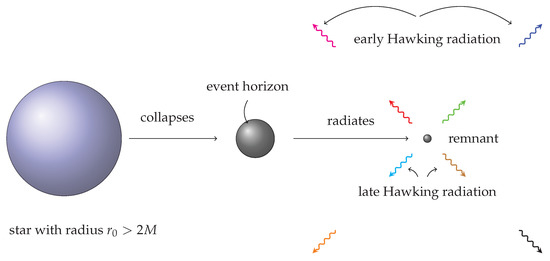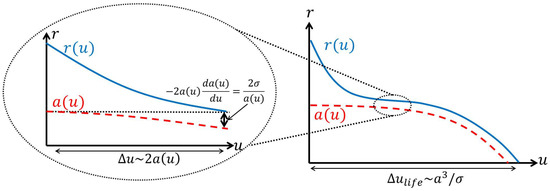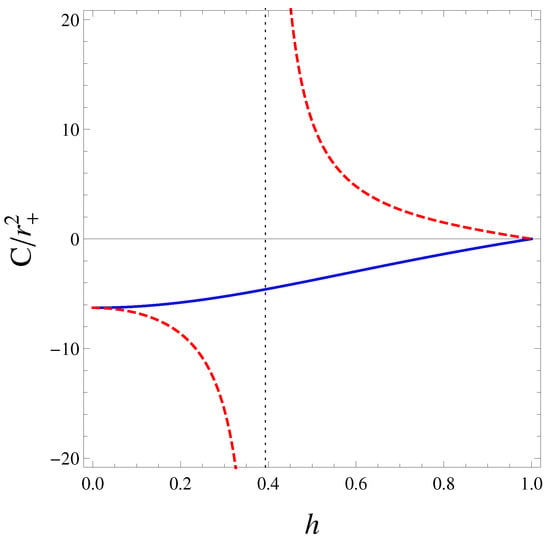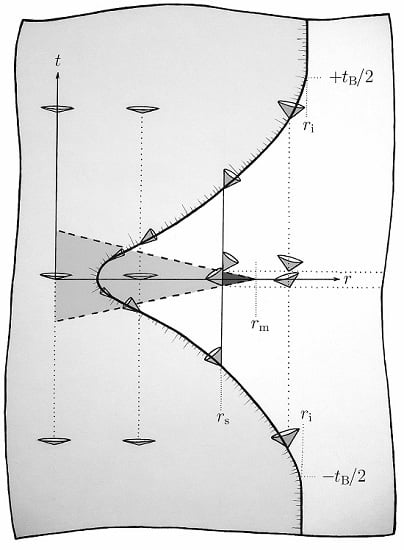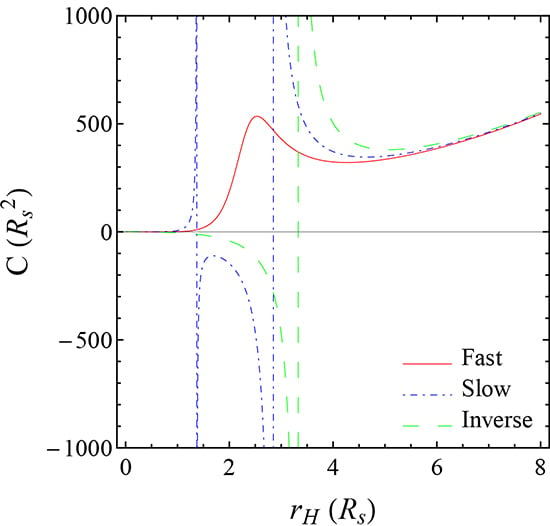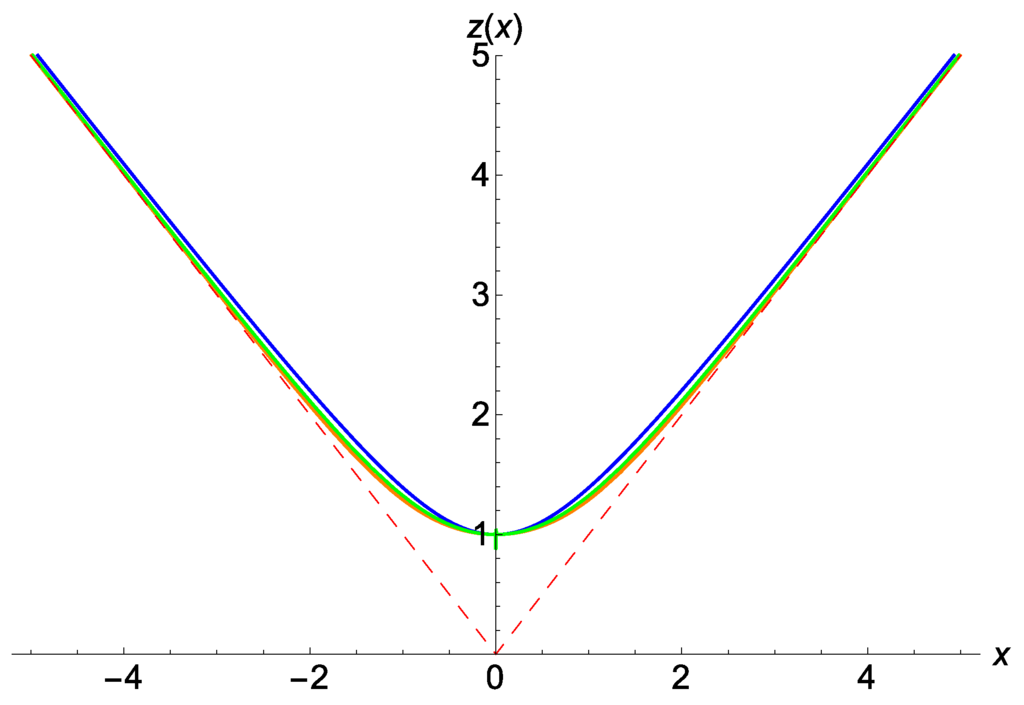Open Questions in Black Hole Physics
A topical collection in Universe (ISSN 2218-1997). This collection belongs to the section "Gravitation".
Viewed by 116924
Share This Topical Collection
Editors
 Dr. Gonzalo J. Olmo
Dr. Gonzalo J. Olmo
 Dr. Gonzalo J. Olmo
Dr. Gonzalo J. Olmo
E-Mail
Website
Collection Editor
Associate Professor, Department of Theoretical Physics & IFIC, University of Valencia & CSIC, C/ Dr. Moliner 50, 46100 Burjassot, Valencia, Spain
Interests: black holes; singularities; quantum fields in curved space-time; inflation; modified gravity; Palatini formalism; stellar structure models; compact objects
Special Issues, Collections and Topics in MDPI journals
 Dr. Diego Rubiera-Garcia
Dr. Diego Rubiera-Garcia
 Dr. Diego Rubiera-Garcia
Dr. Diego Rubiera-Garcia
E-Mail
Website
Collection Editor
Instituto de Astrofísica e Ciências do Espaço, Faculdade de Ciências da Universidade de Lisboa, Edifício C8, Campo Grande, P-1749-016 Lisbon, Portugal
Interests: black holes; modified gravity; cosmology; bouncing solutions; spacetime singularities; nonlinear electrodynamics; field theory; topological defects; metric-affine geometry
Special Issues, Collections and Topics in MDPI journals
Topical Collection Information
Dear Colleagues,
Black holes are fascinating objects that hold the key to uncover the intimate relation between gravitation and the quantum, as well as a number of astrophysical phenomena. The strength of their gravitational field is responsible for extreme deformations of the causal structure of space-time, leading to intriguing thermodynamic properties and serious tensions with our understanding of the quantum world. The current picture of the Universe could hardly be explained without recurring to them, even though they are very elusive and defy direct observational detection.
The coming years are likely to witness important breakthroughs in our view of black holes and their astrophysical and quantum properties through the direct detection of gravitational waves and Hawking radiation in analogue models. A number of fundamental open questions might find an answer and new ones may emerge. Are black holes, seen as regions of space-time hidden behind an event horizon, astrophysically realizable? Are there viable compact-object alternatives? Will black hole mergers allow us to experimentally probe the strong-field gravitational regime? What happens when two singularities meet in a black hole merger? Do singularities have a physical role? Can wormholes alleviate the issue of singularities? How much can we learn about black holes from analogue models? What is the end state of black hole evaporation? Why primordial black hole explosions have not been observed yet? What aspects of black holes are modified in a quantum theory of gravity? How does a supermassive black hole interact with its host galaxy? These are just a few examples of the Open Questions in Black Hole Physics we expect to address in this Special Issue of Universe.
Dr. Gonzalo J. Olmo
Dr. Diego Rubiera-Garcia
Collection Editors
Manuscript Submission Information
Manuscripts should be submitted online at www.mdpi.com by registering and logging in to this website. Once you are registered, click here to go to the submission form. Manuscripts can be submitted until the deadline. All submissions that pass pre-check are peer-reviewed. Accepted papers will be published continuously in the journal (as soon as accepted) and will be listed together on the collection website. Research articles, review articles as well as short communications are invited. For planned papers, a title and short abstract (about 100 words) can be sent to the Editorial Office for announcement on this website.
Submitted manuscripts should not have been published previously, nor be under consideration for publication elsewhere (except conference proceedings papers). All manuscripts are thoroughly refereed through a single-blind peer-review process. A guide for authors and other relevant information for submission of manuscripts is available on the Instructions for Authors page. Universe is an international peer-reviewed open access monthly journal published by MDPI.
Please visit the Instructions for Authors page before submitting a manuscript.
Submitted papers should be well formatted and use good English. Authors may use MDPI's
English editing service prior to publication or during author revisions.
Published Papers (36 papers)
Open AccessArticle
Black Holes with a Cloud of Strings and Quintessence in a Non-Linear Electrodynamics Scenario
by
Francinaldo Florencio do Nascimento, Valdir Barbosa Bezerra and Jefferson de Morais Toledo
Viewed by 379
Abstract
We obtain exact black hole solutions to Einstein gravity coupled with a nonlinear electrodynamics field, in the presence of a cloud of strings and quintessence, as sources. The solutions have four parameters, namely
m,
k,
a, and
, corresponding
[...] Read more.
We obtain exact black hole solutions to Einstein gravity coupled with a nonlinear electrodynamics field, in the presence of a cloud of strings and quintessence, as sources. The solutions have four parameters, namely
m,
k,
a, and
, corresponding to the physical mass of the black hole, the nonlinear charge of a self-gravitating magnetic field, the cloud of strings, and the intensity of the quintessential fluid. The consequences of these sources on the regularity or singularity of the solutions, on their horizons, as well as on the energy conditions, are discussed. We study some aspects concerning the thermodynamics of the black hole, by taking into account the mass, Hawking temperature, and heat capacity and show how these quantities depend on the presence of the cloud of strings and quintessence, in the scenario considered.
Full article
►▼
Show Figures
Open AccessReview
Three-Dimensional Quantum Black Holes: A Primer
by
Emanuele Panella, Juan F. Pedraza and Andrew Svesko
Cited by 7 | Viewed by 689
Abstract
We review constructions of three-dimensional ‘quantum’ black holes. Such spacetimes arise via holographic braneworlds and are exact solutions to an induced higher-derivative theory of gravity consistently coupled to a large-
c quantum field theory with an ultraviolet cutoff, accounting for all orders of
[...] Read more.
We review constructions of three-dimensional ‘quantum’ black holes. Such spacetimes arise via holographic braneworlds and are exact solutions to an induced higher-derivative theory of gravity consistently coupled to a large-
c quantum field theory with an ultraviolet cutoff, accounting for all orders of semi-classical backreaction. Notably, such quantum-corrected black holes are much larger than the Planck length. We describe the geometry and horizon thermodynamics of a host of asymptotically (anti-) de Sitter and flat quantum black holes. A summary of higher-dimensional extensions is given. We survey multiple applications of quantum black holes and braneworld holography.
Full article
►▼
Show Figures
Open AccessArticle
4D Embedded Rotating Black Hole as a Particle Accelerator in the Presence of Magnetic Fields
by
Abraão J. S. Capistrano, Carlos Henrique Coimbra-Araújo and Rita de Cássia dos Anjos
Viewed by 622
Abstract
We analyze a rotating black hole (BH) in a four-dimensional space-time embedded in five-dimensional flat bulk. In Boyer–Lindquist coordinates, we use a generic extension of the Kerr metric by the line element of Gürses–Gürsey metric. We discuss their horizon properties and shadow cast
[...] Read more.
We analyze a rotating black hole (BH) in a four-dimensional space-time embedded in five-dimensional flat bulk. In Boyer–Lindquist coordinates, we use a generic extension of the Kerr metric by the line element of Gürses–Gürsey metric. We discuss their horizon properties and shadow cast which is tailored by the influence of the extrinsic curvature. By means of the model based on the Nash–Greene theorem, we analyze the Gürses–Gürsey metric embedded in five dimensions acting as a rotating “charged” BH which may be regarded as a source of ultrahigh-energy cosmic rays (UHECRs). We also show that this type of BH presents a different structure of the accretion disk which is modified by the extrinsic curvature leading to an enlargement of the photons ring and an increase in the BH’s inner shadow. In the presence of a magnetic field, our initial results suggest that such BHs may be efficient free-test particle accelerators orbiting the inner stable circular orbit (ISCO).
Full article
►▼
Show Figures
Open AccessArticle
From the Janis–Newman–Winicour Naked Singularities to the Einstein–Maxwell Phantom Wormholes
by
Changjun Gao and Jianhui Qiu
Cited by 2 | Viewed by 514
Abstract
The Janis–Newman–Winicour spacetime corresponds to a static spherically symmetric solution of Einstein equations with the energy momentum tensor of a massless quintessence field. It is understood that the spacetime describes a naked singularity. The solution has two parameters,
b and
s. To
[...] Read more.
The Janis–Newman–Winicour spacetime corresponds to a static spherically symmetric solution of Einstein equations with the energy momentum tensor of a massless quintessence field. It is understood that the spacetime describes a naked singularity. The solution has two parameters,
b and
s. To our knowledge, the exact physical meaning of the two parameters is still unclear. In this paper, starting from the Janis–Newman–Winicour naked singularity solution, we first obtain a wormhole solution by a complex transformation. Then, letting the parameter
s approach infinity, we obtain the well-known exponential wormhole solution. After that, we embed both the Janis–Newman–Winicour naked singularity and its wormhole counterpart in the background of a de Sitter or anti-de Sitter universe with the energy momentum tensor of massive quintessence and massive phantom fields, respectively. To our surprise, the resulting quintessence potential is actually the dilaton potential found by one of us. It indicates that, by modulating the parameters in the charged dilaton black hole solutions, we can obtain the Janis–Newman–Winicour solution. Furthermore, a charged wormhole solution is obtained by performing a complex transformation on the charged dilaton black hole solutions in the background of a de Sitter or anti-de Sitter universe. We eventually find that
s is actually related to the coupling constant of the dilaton field to the Maxwell field and
b is related to a negative mass for the dilaton black holes. A negative black hole mass is physically forbidden. Therefore, we conclude that the Janis–Newman–Winicour naked singularity solution is not physically allowed.
Full article
►▼
Show Figures
Open AccessArticle
Non-Minimally Coupled Electromagnetic Fields and Observable Implications for Primordial Black Holes
by
Susmita Jana and S. Shankaranarayanan
Cited by 3 | Viewed by 662
Abstract
General relativity (GR) postulates have been verified with high precision, yet our understanding of how gravity interacts with matter fields remains incomplete. Various modifications to GR have been proposed in both classical and quantum realms to address these interactions within the strong gravity
[...] Read more.
General relativity (GR) postulates have been verified with high precision, yet our understanding of how gravity interacts with matter fields remains incomplete. Various modifications to GR have been proposed in both classical and quantum realms to address these interactions within the strong gravity regime. One such approach is non-minimal coupling (NMC), where the space-time curvature (scalar and tensor) interacts with matter fields, resulting in matter fields not following the geodesics. To probe the astrophysical implications of NMC, in this work, we investigate non-minimally coupled electromagnetic (EM) fields in the presence of black holes. Specifically, we show that primordial black holes (PBHs) provide a possible tool to constrain the NMC parameter. PBHs represent an intriguing cosmological black hole class that does not conform to the no-hair theorem. We model the PBH as a Sultana–Dyer black hole and compare it with Schwarzschild. We examine observables such as the radius of the photon sphere, critical impact parameter, and total deflection angles for non-minimally coupled photons for Schwarzschild and Sultana–Dyer black holes. Both the black hole space-times lead to similar constraints on the NMC parameter. For a PBH of mass
, the photon sphere will not be formed for one mode. Hence, the photons forming the photon sphere will be highly polarized, potentially leading to observable implications.
Full article
►▼
Show Figures
Open AccessArticle
On the Five-Dimensional Non-Extremal Reissner–Nordström Black Hole: Retractions and Scalar Quasibound States
by
Mohammed Abu-Saleem, Horacio Santana Vieira and Luiz Henrique Campos Borges
Cited by 2 | Viewed by 668
Abstract
In this paper, we examine the role played by topology, and some specific boundary conditions as well, on the physics of a higher-dimensional black hole. We analyze the line element of a five-dimensional non-extremal Reissner–Nordström black hole to obtain a new family of
[...] Read more.
In this paper, we examine the role played by topology, and some specific boundary conditions as well, on the physics of a higher-dimensional black hole. We analyze the line element of a five-dimensional non-extremal Reissner–Nordström black hole to obtain a new family of subspaces that are types of strong retractions and deformations, and then we extend these results to higher dimensions in order to deduce the relationship between various types of transformations. We also study the scalar field perturbations in the background under consideration and obtain an analytical expression for the quasibound state frequencies by using the Vieira–Bezerra–Kokkotas approach, which uses the polynomial conditions of the general Heun functions, and then we discuss the stability of the system and present the radial eigenfunctions. Our main goal is to discuss the physical meaning of these mathematical applications in such higher-dimensional effective metric.
Full article
►▼
Show Figures
Open AccessArticle
Nonsingular, Lump-like, Scalar Compact Objects in (2 + 1)-Dimensional Einstein Gravity
by
Roberto V. Maluf, Gerardo Mora-Pérez, Gonzalo J. Olmo and Diego Rubiera-Garcia
Viewed by 840
Abstract
We study the space-time geometry generated by coupling a free scalar field with a noncanonical kinetic term to general relativity in
dimensions. After identifying a family of scalar Lagrangians that yield exact analytical solutions in static and circularly
[...] Read more.
We study the space-time geometry generated by coupling a free scalar field with a noncanonical kinetic term to general relativity in
dimensions. After identifying a family of scalar Lagrangians that yield exact analytical solutions in static and circularly symmetric scenarios, we classify the various types of solutions and focus on a branch that yields asymptotically flat geometries. We show that the solutions within such a branch can be divided in two types, namely naked singularities and nonsingular objects without a center. In the latter, the energy density is localized around a maximum and vanishes only at infinity and at an inner boundary. This boundary has vanishing curvatures and cannot be reached by any time-like or null geodesic in finite affine time. This allows us to consistently interpret such solutions as nonsingular, lump-like, static compact scalar objects whose eventual extension to the
-dimensional context could provide structures of astrophysical interest.
Full article
►▼
Show Figures
Open AccessArticle
On the Role of the Tail Term in Electromagnetic Radiation Reaction
by
Zdeněk Stuchlík, Martin Kološ, Arman Tursunov and Dmitri Gal’tsov
Cited by 1 | Viewed by 578
Abstract
In a recent study devoted to the influence of electromagnetic radiation reaction on the motion of radiating charged particles in magnetized black hole spacetimes the authors claim that the tail term cannot be neglected in the complete DeWitt–Brehme equation, putting into doubt the
[...] Read more.
In a recent study devoted to the influence of electromagnetic radiation reaction on the motion of radiating charged particles in magnetized black hole spacetimes the authors claim that the tail term cannot be neglected in the complete DeWitt–Brehme equation, putting into doubt the previous papers where such an approximation was used. Here, we demonstrate by using simple dimensional arguments that such a statement is misleading in many astrophysically relevant situations. In the case of relativistic electrons moving around a stellar-mass black hole, the tail term is ignorable if a magnetic field of at least a few Gauss is present.On the other hand, in different situations, the tail term can be relevant, as demonstrated in the case of orbital widening, where it can even amplify the effect.
Full article
►▼
Show Figures
Open AccessArticle
Thermodynamics and Phase Transitions of Dyonic AdS Black Holes in Gauss-Bonnet-Scalar Gravity
by
Pinghui Mou, Zhengzhou Yan and Guoping Li
Cited by 1 | Viewed by 1375
Abstract
In this paper, by treating the cosmological constant as a thermodynamic pressure, we study the thermodynamics and phase transitions of the dyonic AdS black holes in Gauss-Bonnet-Scalar gravity, where the conformal scalar field is considered. In a more general extended phase space, we
[...] Read more.
In this paper, by treating the cosmological constant as a thermodynamic pressure, we study the thermodynamics and phase transitions of the dyonic AdS black holes in Gauss-Bonnet-Scalar gravity, where the conformal scalar field is considered. In a more general extended phase space, we first verified the first law of black hole thermodynamics, and find that it is always true. Meanwhile, the corresponding Smarr relation is also obtained. Then, we found that this black hole exhibits interesting critical behaviors in six dimensions, i.e., two swallowtails can be observed simultaneously. Interestingly, in a specific parameter space, we observed the small/intermediate/large black hole phase transitions, with the triple point naturally appearing. Additionally, the small/large black hole phase transition, similar to the liquid/gas phase transition of the van der Waals fluids, can also be found in other parameter regions. Moreover, we note that the novel phase structure composed of two separate coexistence curves discovered in the dyonic AdS black holes in Einstein-Born-Infeld gravity disappears in Gauss-Bonnet-Scalar gravity. This suggests that this novel phase structure may be related to gravity theory, and importantly, it is generally observed that the triple point is a universal property of dyonic AdS black holes. On the other hand, we calculated the critical exponents near the critical points and found that they share the same values as in mean field theory. Finally, it is true that these results will provide some deep insights into the interesting thermodynamic properties of the dyonic AdS black holes in the background of conformal scalar fields.
Full article
►▼
Show Figures
Open AccessArticle
Binary Black Hole Spins: Model Selection with GWTC-3
by
Carole Périgois, Michela Mapelli, Filippo Santoliquido, Yann Bouffanais and Roberta Rufolo
Cited by 10 | Viewed by 1556
Abstract
The origin of the spins of stellar-mass black holes is still controversial, and angular momentum transport inside massive stars is one of the main sources of uncertainty. Here, we apply hierarchical Bayesian inference to derive constraints on spin models from the 59 most
[...] Read more.
The origin of the spins of stellar-mass black holes is still controversial, and angular momentum transport inside massive stars is one of the main sources of uncertainty. Here, we apply hierarchical Bayesian inference to derive constraints on spin models from the 59 most confident binary black hole merger events in the third gravitational-wave transient catalogue (GWTC-3). We consider up to five parameters: chirp mass, mass ratio, redshift, effective spin, and precessing spin. For the model selection, we use a set of binary population synthesis simulations spanning drastically different assumptions for black hole spins and natal kicks. In particular, our spin models range from the maximal to minimal efficiency of angular momentum transport in stars. We find that if we include the precessing spin parameter into our analysis, models predicting only vanishingly small spins are in tension with GWTC-3 data. On the other hand, models in which most spins are vanishingly small but that also include a subpopulation of tidally spun-up black holes are a good match to the data. Our results show that the precessing spin parameter has a crucial impact on model selection.
Full article
►▼
Show Figures
Open AccessArticle
Magnetocentrifugal Mechanism of Pair Creation in AGN
by
Zaza N. Osmanov, Gianluigi Bodo and Paola Rossi
Viewed by 1477
Abstract
In this study, we examine the efficiency of pair creation by means of the centrifugal mechanism. The strong magnetic field and the effects of rotation, which always take place in Kerr-type black holes, guarantee the frozen-in condition, leading to the generation of an
[...] Read more.
In this study, we examine the efficiency of pair creation by means of the centrifugal mechanism. The strong magnetic field and the effects of rotation, which always take place in Kerr-type black holes, guarantee the frozen-in condition, leading to the generation of an exponentially amplifying electrostatic field. This field, upon reaching the Schwinger threshold, leads to efficient pair production. Researchers have studied this process across a wide range of AGN luminosities and black hole masses, and found that the mechanism is highly efficient, indicating that for AGNs where centrifugal effects are significant, the annihilation lines in the MeV range will be very strong.
Full article
►▼
Show Figures
Open AccessArticle
Quasiperiodic Oscillations and Dynamics of Test Particles around Quasi- and Non-Schwarzschild Black Holes
by
Sardor Murodov, Javlon Rayimbaev, Bobomurat Ahmedov and Eldor Karimbaev
Cited by 8 | Viewed by 1414
Abstract
One of the open problems in black hole physics is testing spacetime around black holes through astrophysical observations in the strong field regime. In fact, black holes cannot produce radiation themselves in the electromagnetic spectrum. However, a black hole’s gravity plays an important
[...] Read more.
One of the open problems in black hole physics is testing spacetime around black holes through astrophysical observations in the strong field regime. In fact, black holes cannot produce radiation themselves in the electromagnetic spectrum. However, a black hole’s gravity plays an important role in the production of the radiation of the accretion disc around it. One may obtain valuable information from the electromagnetic radiation of accretion discs about the gravitational properties of the spacetime around black holes. In this work, we study particle dynamics in the spacetime of quasi- and non-Schwarzschild black holes. We compare the gravitational effects of the spacetime deformation parameters of both black hole solutions on the innermost stable circular orbit (ISCO) radius, position, energy, and angular momentum of test particles at the ISCO, together with the energy efficiency of the accretion disc in the thin Novikov–Thorn model. Furthermore, we study the frequencies of particle oscillations in the radial and angular directions along circular stable orbits around both deformed black holes. Furthermore, we investigate quasiperiodic oscillations around the black holes in the relativistic precession model. We show the dependence of the deviation parameters on the orbits of twin peak QPOs with the frequency ratio 3:2. In the obtained results, we compare the gravitational effects of deviation parameters with the spin of a rotating Kerr black hole. Finally, we obtain constraints on the values of the deviation parameter of the spacetime around the black hole at the center of the microquasars GRO J1655-40 and GRS 1915-105 and their mass, using the
method.
Full article
►▼
Show Figures
Open AccessArticle
Killing Horizons and Surface Gravities for a Well-Behaved Three-Function Generalization of the Kerr Spacetime
by
Joshua Baines and Matt Visser
Cited by 11 | Viewed by 1801
Abstract
Thanks to the recent advent of the event horizon telescope (EHT), we now have the opportunity to test the physical ramifications of the strong-field near-horizon regime for astrophysical black holes. Herein, emphasizing the trade-off between tractability and generality, the authors discuss a particularly
[...] Read more.
Thanks to the recent advent of the event horizon telescope (EHT), we now have the opportunity to test the physical ramifications of the strong-field near-horizon regime for astrophysical black holes. Herein, emphasizing the trade-off between tractability and generality, the authors discuss a particularly powerful three-function distortion of the Kerr spacetime, depending on three arbitrary functions of the radial coordinate
r, which on the one hand can be fit to future observational data, and on the other hand is sufficiently general so as to encompass an extremely wide class of theoretical models. In all of these spacetimes, both the timelike Hamilton–Jacobi (geodesic) and massive Klein–Gordon (wave) equations separate, and the spacetime geometry is asymptotically Kerr; hence, these spacetimes are well-suited to modeling real astrophysical black holes. The authors then prove the existence of Killing horizons for this entire class of spacetimes, and give tractable expressions for the angular velocities, areas, and surface gravities of these horizons. We emphasize the validity of rigidity results and zeroth laws for these horizons.
Full article
Open AccessArticle
Effective Field Theory Description of Horizon-Fluid Determines the Scrambling Time
by
Swastik Bhattacharya and S. Shankaranarayanan
Viewed by 1346
Abstract
Black hole horizons interact with external fields when matter or energy falls through them. Such non-stationary black hole horizons can be described using viscous fluid equations. This work attempts to describe this process using effective field theory methods. Such a description can provide
[...] Read more.
Black hole horizons interact with external fields when matter or energy falls through them. Such non-stationary black hole horizons can be described using viscous fluid equations. This work attempts to describe this process using effective field theory methods. Such a description can provide important insights beyond classical black hole physics. In this work, we construct a low-energy effective field theory description for the horizon-fluid of a 4-dimensional, asymptotically flat, Einstein black hole. The effective field theory of the dynamical horizon has two ingredients: degrees of freedom involved in the interaction with external fields and symmetry. The dual requirements of incorporating near-horizon symmetries (
diffeomorphism) and possessing length scales due to external perturbations are naturally satisfied if the theory on the non-stationary black hole horizon is a deformed Conformal Field Theory (CFT). For the homogeneous external perturbations, at the lowest order, this leads to a
-dimensional massive scalar field where the mass is related to the extent of the deformation of the CFT. We determine the mass by obtaining the correlation function corresponding to the effective field and relating it to the bulk viscosity of the horizon-fluid. Additionally, we show that the coefficient of bulk viscosity of the horizon-fluid determines the time required for black holes to scramble. Furthermore, we argue that matter-field modes with energy less than
falling into the horizon thermalize more slowly. Finally, we construct a microscopic toy model for the horizon-fluid that reduces to the effective field theory with a single scalar degree of freedom. We then discuss the usefulness of the effective field model in understanding how information escapes from a black hole at late times.
Full article
►▼
Show Figures
Open AccessArticle
Identification of a Regular Black Hole by Its Shadow
by
Irina Dymnikova and Kirill Kraav
Cited by 29 | Viewed by 3360
Abstract
We study shadows of regular rotating black holes described by the axially symmetric solutions asymptotically Kerr for a distant observer, obtained from regular spherical solutions of the Kerr–Schild class specified by
[...] Read more.
We study shadows of regular rotating black holes described by the axially symmetric solutions asymptotically Kerr for a distant observer, obtained from regular spherical solutions of the Kerr–Schild class specified by
. All regular solutions obtained with the Newman–Janis algorithm belong to this class. Their basic generic feature is the de Sitter vacuum interior. Information about the interior content of a regular rotating de Sitter-Kerr black hole can be in principle extracted from observation of its shadow. We present the general formulae for description of shadows for this class of regular black holes, and numerical analysis for two particular regular black hole solutions. We show that the shadow of a de Sitter-Kerr black hole is typically smaller than that for the Kerr black hole, and the difference depends essentially on the interior density and on the pace of its decreasing.
Full article
►▼
Show Figures
Open AccessReview
Explaining Defects of the Universal Vacua with Black Holes-Hedgehogs and Strings
by
C. R. Das, L. V. Laperashvili, H. B. Nielsen and B. G. Sidharth
Cited by 1 | Viewed by 3231
Abstract
Assuming the Multiple Point Principle (MPP) as a new law of Nature, we considered the existence of the two degenerate vacua of the Universe: (a) the first Electroweak (EW) vacuum at
GeV—“true vacuum”, and (b) the second Planck scale
[...] Read more.
Assuming the Multiple Point Principle (MPP) as a new law of Nature, we considered the existence of the two degenerate vacua of the Universe: (a) the first Electroweak (EW) vacuum at
GeV—“true vacuum”, and (b) the second Planck scale “false vacuum” at
GeV. In these vacua, we investigated different topological defects. The main aim of the paper is an investigation of the black-hole-hedgehogs configurations as defects of the false vacuum. In the framework of the
gravity, described by the Gravi-Weak unification model, we considered a black-hole solution, which corresponds to a “hedgehog”—global monopole, that has been “swallowed” by the black-hole with mass core
GeV and radius
GeV
. Considering the results of the hedgehog lattice theory in the framework of the
Yang-Mills gauge-invariant theory with hedgehogs in the Wilson loops, we have used the critical value of temperature for the hedgehogs’ confinement phase (
GeV). This result gave us the possibility to conclude that the SM shows a new physics (with contributions of the
-triplet Higgs bosons) at the scale ∼10 TeV. This theory predicts the stability of the EW-vacuum and the accuracy of the MPP.
Full article
►▼
Show Figures
Open AccessArticle
Horizon Areas and Logarithmic Correction to the Charged Accelerating Black Hole Entropy
by
Parthapratim Pradhan
Cited by 32 | Viewed by 2573
Abstract
It has been shown by explicit and exact calculation that the geometric product formula i.e., area (or entropy) product formula of outer horizon (
) and inner horizon (
) for charged accelerating black hole (BH) should neither be
[...] Read more.
It has been shown by explicit and exact calculation that the geometric product formula i.e., area (or entropy) product formula of outer horizon (
) and inner horizon (
) for charged accelerating black hole (BH) should neither be mass-independent nor quantized. This implies that the area (or entropy ) product is mass-independent conjecture has been broken down for charged accelerating BH. This also further implies that the mass-independent feature of the area product of
is not a generic feature at all. We also compute the Cosmic-Censorship-Inequality for this BH. Moreover, we compute the specific heat for this BH to determine the local thermodynamic stability. Under certain criterion, the BH shows the second order phase transition. Furthermore, we compute logarithmic corrections to the entropy for the said BH due to small statistical fluctuations around the thermal equilibrium.
Full article
►▼
Show Figures
Open AccessArticle
On Quantization of a Slowly Rotating Kerr Black Hole in Teleparallel Gravity
by
Sérgio Costa Ulhoa, Ednardo Paulo Spaniol and Ronni Geraldo Gomes Amorim
Cited by 2 | Viewed by 2539
Abstract
In this article we calculate the total angular momentum for Kerr space-time for slow rotations in the context of teleparallel gravity. In order to analyze the role of such a quantity, we apply Weyl quantization method to obtain a quantum equation for the
[...] Read more.
In this article we calculate the total angular momentum for Kerr space-time for slow rotations in the context of teleparallel gravity. In order to analyze the role of such a quantity, we apply Weyl quantization method to obtain a quantum equation for the z-component of the angular momentum density, and for the squared angular momentum density as well. We present an approximate solution using the Adomian decomposition method (AM), which reveals a discrete characteristic for angular momentum.
Full article
Open AccessFeature PaperArticle
Greybody Factors for Schwarzschild Black Holes: Path-Ordered Exponentials and Product Integrals
by
Finnian Gray and Matt Visser
Cited by 20 | Viewed by 3717
Abstract
In earlier work concerning the sparsity of the Hawking flux, we found it necessary to re-examine what is known regarding the greybody factors of black holes, with a view to extending and expanding on some old results from the 1970s. Focusing specifically on
[...] Read more.
In earlier work concerning the sparsity of the Hawking flux, we found it necessary to re-examine what is known regarding the greybody factors of black holes, with a view to extending and expanding on some old results from the 1970s. Focusing specifically on Schwarzschild black holes, we have re-calculated and re-assessed the greybody factors using a path-ordered-exponential approach, a technique which has the virtue of providing a pedagogically useful semi-explicit formula for the relevant Bogoliubov coefficients. These path-ordered-exponentials, being based on a variant of the “transfer matrix” formalism, are closely related to so-called “product integrals”, leading to quite straightforward and direct numerical evaluation, while side-stepping any need for numerically solving the relevant ordinary differential equations. Furthermore, while considerable analytic information is already available regarding both the high-frequency and low-frequency asymptotics of these greybody factors, numerical approaches seem better adapted to finding suitable “global models” for these greybody factors in the intermediate frequency regime, where most of the Hawking flux is actually concentrated. Working in a more general context, these path-ordered-exponential techniques are also likely to be of interest for generic barrier-penetration problems.
Full article
►▼
Show Figures
Open AccessArticle
High Speed Cylindrical Gravitational Collapse with Anisotropic Pressure
by
Quaid Iqbal, Hasrat Hussain Shah and Zahid Ahmad
Cited by 1 | Viewed by 3100
Abstract
This paper focuses on the cylindrical symmetric gravitational collapse in the presence of anisotropic fluid. The high speed approximation scheme was used. In this perspective, the effect of anisotropy of pressure in fluid distribution on the collapsing process with the Equation of State
[...] Read more.
This paper focuses on the cylindrical symmetric gravitational collapse in the presence of anisotropic fluid. The high speed approximation scheme was used. In this perspective, the effect of anisotropy of pressure in fluid distribution on the collapsing process with the Equation of State (EoS)
and
. The effect of pressure on collapse in radial and tangential direction was observed for all values of
and
l. It is determined that, for some values of constants, i.e.,
and
l, collapse results in a Naked Singularity (NS) while, for some values of constants, it does not form NS or Black Hole (BH). This study presents the effect on the collapsing process for all values of
and
l.
Full article
Open AccessEditor’s ChoiceArticle
On a Model of Magnetically Charged Black Hole with Nonlinear Electrodynamics
by
Sergey I. Kruglov
Cited by 17 | Viewed by 3295
Abstract
The Bronnikov model of nonlinear electrodynamics is investigated in general relativity. The magnetic black hole is considered and we obtain a solution giving corrections to the Reissner-Nordström solution. In this model spacetime at
becomes Minkowski’s spacetime. We calculate the magnetic
[...] Read more.
The Bronnikov model of nonlinear electrodynamics is investigated in general relativity. The magnetic black hole is considered and we obtain a solution giving corrections to the Reissner-Nordström solution. In this model spacetime at
becomes Minkowski’s spacetime. We calculate the magnetic mass of the black hole and the metric function. At some parameters of the model there can be one, two or no horizons. The Hawking temperature and the heat capacity of black holes are calculated. We show that a second-order phase transition takes place and black holes are thermodynamically stable at some range of parameters.
Full article
►▼
Show Figures
Open AccessReview
Scalar-Tensor Black Holes Embedded in an Expanding Universe
by
Daria Tretyakova and Boris Latosh
Cited by 9 | Viewed by 3356
Abstract
In this review, we focus our attention on scalar-tensor gravity models and their empirical verification in terms of black hole and wormhole physics. We focus on black holes, embedded in an expanding universe, describing both cosmological and astrophysical scales. We show that in
[...] Read more.
In this review, we focus our attention on scalar-tensor gravity models and their empirical verification in terms of black hole and wormhole physics. We focus on black holes, embedded in an expanding universe, describing both cosmological and astrophysical scales. We show that in scalar-tensor gravity it is quite common that the local geometry is isolated from the cosmological expansion, so that it does not backreact on the black hole metric. We try to extract common features of scalar-tensor black holes in an expanding universe and point out the issues that are not fully investigated.
Full article
Open AccessArticle
On the Near-Horizon Canonical Quantum Microstates from AdS2/CFT1 and Conformal Weyl Gravity
by
Leo Rodriguez and Shanshan Rodriguez
Cited by 2 | Viewed by 3687
Abstract
We compute the full asymptotic symmetry group of black holes belonging to the same equivalence class of solutions within the conformal Weyl gravity formalism. We do this within an
correspondence and by performing a
[...] Read more.
We compute the full asymptotic symmetry group of black holes belonging to the same equivalence class of solutions within the conformal Weyl gravity formalism. We do this within an
correspondence and by performing a Robinson–Wilczek two-dimensional reduction, thus enabling the construction of effective quantum theory of the remaining field content. The resulting energy momentum tensors generate asymptotic Virasoro algebras to
s-waves, with calculable central extensions. These centers, in conjunction with their proper regularized lowest Virasoro eigenmodes, yield the Bekenstein–Hawking black hole entropy via the statistical Cardy formula. We also analyze quantum holomorphic fluxes of the dual conformal field theories (CFTs) in the near horizon, giving rise to finite Hawking temperatures weighted by the central charges of the respective black hole spacetimes. We conclude with a discussion and outlook for future work.
Full article
Open AccessReview
Black Holes: Eliminating Information or Illuminating New Physics?
by
Sumanta Chakraborty and Kinjalk Lochan
Cited by 59 | Viewed by 9360
Abstract
Black holes, initially thought of as very interesting mathematical and geometric solutions of general relativity, over time, have come up with surprises and challenges for modern physics. In modern times, they have started to test our confidence in the fundamental understanding of nature.
[...] Read more.
Black holes, initially thought of as very interesting mathematical and geometric solutions of general relativity, over time, have come up with surprises and challenges for modern physics. In modern times, they have started to test our confidence in the fundamental understanding of nature. The most serious charge on the black holes is that they eat up information, never to release and subsequently erase it. This goes absolutely against the sacred principles of all other branches of fundamental sciences. This realization has shaken the very base of foundational concepts, both in quantum theory and gravity, which we always took for granted. Attempts to get rid of of this charge, have led us to crossroads with concepts, hold dearly in quantum theory. The sphere of black hole’s tussle with quantum theory has readily and steadily grown, from the advent of the Hawking radiation some four decades back, into domain of quantum information theory in modern times, most aptly, recently put in the form of the firewall puzzle. Do black holes really indicate something sinister about their existence or do they really point towards the troubles of ignoring the fundamental issues, our modern theories are seemingly plagued with? In this review, we focus on issues pertaining to black hole evaporation, the development of the information loss paradox, its recent formulation, the leading debates and promising directions in the community.
Full article
►▼
Show Figures
Open AccessArticle
Non-Linear Stationary Solutions in Realistic Models for Analog Black-Hole Lasers
by
Juan Ramón Muñoz De Nova
Cited by 6 | Viewed by 4187
Abstract
From both a theoretical and an experimental point of view, Bose–Einstein condensates are good candidates for studying gravitational analogues of black holes and black-hole lasers. In particular, a recent experiment has shown that a black-hole laser configuration can be created in the laboratory.
[...] Read more.
From both a theoretical and an experimental point of view, Bose–Einstein condensates are good candidates for studying gravitational analogues of black holes and black-hole lasers. In particular, a recent experiment has shown that a black-hole laser configuration can be created in the laboratory. However, the most considered theoretical models for analog black-hole lasers are quite difficult to implement experimentally. In order to fill this gap, we devote this work to present more realistic models for black-hole lasers. For that purpose, we first prove that, by symmetrically extending every black-hole configuration, one can obtain a black-hole laser configuration with an arbitrarily large supersonic region. Based on this result, we propose the use of an attractive square well and a double delta-barrier, which can be implemented using standard experimental tools, for studying black-hole lasers. We also compute the different stationary states of these setups, identifying the true ground state of the system and discussing the relation between the obtained solutions and the appearance of dynamical instabilities.
Full article
►▼
Show Figures
Open AccessArticle
A Model of Black Hole Evaporation and 4D Weyl Anomaly
by
Hikaru Kawai and Yuki Yokokura
Cited by 49 | Viewed by 4554
Abstract
We analyze the time evolution of a spherically-symmetric collapsing matter from the point of view that black holes evaporate by nature. We consider conformal matters and solve the semi-classical Einstein equation
[...] Read more.
We analyze the time evolution of a spherically-symmetric collapsing matter from the point of view that black holes evaporate by nature. We consider conformal matters and solve the semi-classical Einstein equation
by using the four-dimensional Weyl anomaly with a large
c coefficient. Here,
contains the contribution from both the collapsing matter and Hawking radiation. The solution indicates that the collapsing matter forms a dense object and evaporates without horizon or singularity, and it has a surface, but looks like an ordinary black hole from the outside. Any object we recognize as a black hole should be such an object.
Full article
►▼
Show Figures
Open AccessReview
Classical Collapse to Black Holes and Quantum Bounces: A Review
by
Daniele Malafarina
Cited by 88 | Viewed by 6542
Abstract
In the last four decades, different programs have been carried out aiming at understanding the final fate of gravitational collapse of massive bodies once some prescriptions for the behaviour of gravity in the strong field regime are provided. The general picture arising from
[...] Read more.
In the last four decades, different programs have been carried out aiming at understanding the final fate of gravitational collapse of massive bodies once some prescriptions for the behaviour of gravity in the strong field regime are provided. The general picture arising from most of these scenarios is that the classical singularity at the end of collapse is replaced by a bounce. The most striking consequence of the bounce is that the black hole horizon may live for only a finite time. The possible implications for astrophysics are important since, if these models capture the essence of the collapse of a massive star, an observable signature of quantum gravity may be hiding in astrophysical phenomena. One intriguing idea that is implied by these models is the possible existence of exotic compact objects, of high density and finite size, that may not be covered by an horizon. The present article outlines the main features of these collapse models and some of the most relevant open problems. The aim is to provide a comprehensive (as much as possible) overview of the current status of the field from the point of view of astrophysics. As a little extra, a new toy model for collapse leading to the formation of a quasi static compact object is presented.
Full article
►▼
Show Figures
Open AccessReview
Janis–Newman Algorithm: Generating Rotating and NUT Charged Black Holes
by
Harold Erbin
Cited by 64 | Viewed by 4974
Abstract
In this review we present the most general form of the Janis–Newman algorithm. This extension allows generating configurations which contain all bosonic fields with spin less than or equal to two (real and complex scalar fields, gauge fields, metric field) and with five
[...] Read more.
In this review we present the most general form of the Janis–Newman algorithm. This extension allows generating configurations which contain all bosonic fields with spin less than or equal to two (real and complex scalar fields, gauge fields, metric field) and with five of the six parameters of the Plebański–Demiański metric (mass, electric charge, magnetic charge, NUT charge and angular momentum). Several examples are included to illustrate the algorithm. We also discuss the extension of the algorithm to other dimensions.
Full article
Open AccessArticle
A Zeroth Law Compatible Model to Kerr Black Hole Thermodynamics
by
Viktor G. Czinner and Hideo Iguchi
Cited by 17 | Viewed by 4657
Abstract
We consider the thermodynamic and stability problem of Kerr black holes arising from the nonextensive/nonadditive nature of the Bekenstein–Hawking entropy formula. Nonadditive thermodynamics is often criticized by asserting that the zeroth law cannot be compatible with nonadditive composition rules, so in this work
[...] Read more.
We consider the thermodynamic and stability problem of Kerr black holes arising from the nonextensive/nonadditive nature of the Bekenstein–Hawking entropy formula. Nonadditive thermodynamics is often criticized by asserting that the zeroth law cannot be compatible with nonadditive composition rules, so in this work we follow the so-called formal logarithm method to derive an additive entropy function for Kerr black holes also satisfying the zeroth law’s requirement. Starting from the most general, equilibrium compatible, nonadditive entropy composition rule of Abe, we consider the simplest non-parametric approach that is generated by the explicit nonadditive form of the Bekenstein–Hawking formula. This analysis extends our previous results on the Schwarzschild case, and shows that the zeroth law-compatible temperature function in the model is independent of the mass–energy parameter of the black hole. By applying the Poincaré turning point method, we also study the thermodynamic stability problem in the system.
Full article
►▼
Show Figures
Open AccessArticle
Peccei–Quinn Transformations and Black Holes: Orbit Transmutations and Entanglement Generation
by
Thiago Prudêncio, Alessio Marrani and Diego J. Cirilo-Lombardo
Cited by 2 | Viewed by 3798
Abstract
In a recent paper (Mod. Phys. Lett. A 2015, 30, 1550104), the black-hole/qubit correspondence (BHQC) was exploited to define “black hole quantum circuits” allowing for a change of the supersymmetry-preserving features of electromagnetic charge configurations supporting the black hole solution. This resulted in
[...] Read more.
In a recent paper (Mod. Phys. Lett. A 2015, 30, 1550104), the black-hole/qubit correspondence (BHQC) was exploited to define “black hole quantum circuits” allowing for a change of the supersymmetry-preserving features of electromagnetic charge configurations supporting the black hole solution. This resulted in switching from one U-duality orbit to another, or equivalently, from an element of the corresponding Freudenthal triple system with a definite rank to another one. On the supergravity side of BHQC, such quantum gates are related to particular symplectic transformations acting on the black hole charges; namely, such transformations cannot belong to the U-duality group, otherwise switching among orbits would be impossible. In this paper, we consider a particular class of such symplectic transformations, namely the ones belonging to the so-called Peccei–Quinn symplectic group, introduced some time ago within the study of very special Kähler geometries of the vector multiplets’ scalar manifolds in N = 2 supergravity in D =4 spacetime dimensions.
Full article
Open AccessArticle
The Problem of Embedded Eigenvalues for the Dirac Equation in the Schwarzschild Black Hole Metric
by
Davide Batic, Marek Nowakowski and Kirk Morgan
Cited by 17 | Viewed by 4644
Abstract
We use the Dirac equation in a fixed black hole background and different independent techniques to demonstrate the absence of fermionic bound states around a Schwarzschild black hole. In particular, we show that no embedded eigenvalues exist which has been claimed for the
[...] Read more.
We use the Dirac equation in a fixed black hole background and different independent techniques to demonstrate the absence of fermionic bound states around a Schwarzschild black hole. In particular, we show that no embedded eigenvalues exist which has been claimed for the case when the energy is less than the particle’s mass. We explicitly prove that the claims regarding the embedded eigenvalues can be traced back to an oversimplified approximation in the calculation. We conclude that no bound states exist regardless of the value of the mass.
Full article
Open AccessArticle
Reissner–Nordström Anti-de Sitter Black Holes in Mimetic F(R) Gravity
by
V. K. Oikonomou
Cited by 40 | Viewed by 4753
Abstract
In this paper, we study under which conditions the Reissner–Nordström anti-de Sitter black hole can be a solution of the vacuum mimetic
gravity with Lagrange multiplier and mimetic scalar potential. As the author demonstrates, the resulting picture in the
[...] Read more.
In this paper, we study under which conditions the Reissner–Nordström anti-de Sitter black hole can be a solution of the vacuum mimetic
gravity with Lagrange multiplier and mimetic scalar potential. As the author demonstrates, the resulting picture in the mimetic
gravity case is a trivial extension of the standard
approach, and in effect, the metric perturbations in the mimetic
gravity case, for the Reissner–Nordström anti-de Sitter black hole metric, at the first order of the perturbed variables are the same at the leading order.
Full article
Open AccessArticle
Black Holes and Exotic Spinors
by
J. M. Hoff Da Silva, C. H. Coronado Villalobos and Roldao Da Rocha
Cited by 9 | Viewed by 4848
Abstract
Exotic spin structures are non-trivial liftings, of the orthogonal bundle to the spin bundle, on orientable manifolds that admit spin structures according to the celebrated Geroch theorem. Exotic spin structures play a role of paramount importance in different areas of physics, from quantum
[...] Read more.
Exotic spin structures are non-trivial liftings, of the orthogonal bundle to the spin bundle, on orientable manifolds that admit spin structures according to the celebrated Geroch theorem. Exotic spin structures play a role of paramount importance in different areas of physics, from quantum field theory, in particular at Planck length scales, to gravity, and in cosmological scales. Here, we introduce an in-depth panorama in this field, providing black hole physics as the fount of spacetime exoticness. Black holes are then studied as the generators of a non-trivial topology that also can correspond to some inequivalent spin structure. Moreover, we investigate exotic spinor fields in this context and the way exotic spinor fields branch new physics. We also calculate the tunneling probability of exotic fermions across a Kerr-Sen black hole, showing that the exotic term does affect the tunneling probability, altering the black hole evaporation rate. Finally we show that it complies with the Hawking temperature universal law.
Full article
►▼
Show Figures
Open AccessReview
Where Does the Physics of Extreme Gravitational Collapse Reside?
by
Carlos Barceló, Raúl Carballo-Rubio and Luis J. Garay
Cited by 47 | Viewed by 6279
Abstract
The gravitational collapse of massive stars serves to manifest the most severe deviations of general relativity with respect to Newtonian gravity: the formation of horizons and spacetime singularities. Both features have proven to be catalysts of deep physical developments, especially when combined with
[...] Read more.
The gravitational collapse of massive stars serves to manifest the most severe deviations of general relativity with respect to Newtonian gravity: the formation of horizons and spacetime singularities. Both features have proven to be catalysts of deep physical developments, especially when combined with the principles of quantum mechanics. Nonetheless, it is seldom remarked that it is hardly possible to combine all these developments into a unified theoretical model, while maintaining reasonable prospects for the independent experimental corroboration of its different parts. In this paper we review the current theoretical understanding of the physics of gravitational collapse in order to highlight this tension, stating the position that the standard view on evaporating black holes stands for. This serves as the motivation for the discussion of a recent proposal that offers the opposite perspective, represented by a set of geometries that regularize the classical singular behavior and present modifications of the near-horizon Schwarzschild geometry as the result of the propagation of non-perturbative ultraviolet effects originated in regions of high curvature. We present an extensive exploration of the necessary steps on the explicit construction of these geometries, and discuss how this proposal could change our present understanding of astrophysical black holes and even offer the possibility of detecting genuine ultraviolet effects in gravitational-wave experiments.
Full article
►▼
Show Figures
Open AccessArticle
Thermodynamic Analysis of Non-Linear Reissner-Nordström Black Holes
by
Jose A. R. Cembranos, Álvaro De la Cruz-Dombriz and Javier Jarillo
Cited by 11 | Viewed by 4507
Abstract
In the present article we study the Inverse Electrodynamics Model. This model is a gauge and parity invariant non-linear Electrodynamics theory, which respects the conformal invariance of standard Electrodynamics. This modified Electrodynamics model, when minimally coupled to General Relativity, is compatible with static
[...] Read more.
In the present article we study the Inverse Electrodynamics Model. This model is a gauge and parity invariant non-linear Electrodynamics theory, which respects the conformal invariance of standard Electrodynamics. This modified Electrodynamics model, when minimally coupled to General Relativity, is compatible with static and spherically symmetric Reissner-Nordström-like black-hole solutions. However, these black-hole solutions present more complex thermodynamic properties than their Reissner-Nordström black-hole solutions counterparts in standard Electrodynamics. In particular, in the Inverse Model a new stability region, with both the heat capacity and the free energy negative, arises. Moreover, unlike the scenario in standard Electrodynamics, a sole transition phase is possible for a suitable choice in the set of parameters of these solutions.
Full article
►▼
Show Figures
Open AccessArticle
Nonsingular Black Holes in ƒ (R) Theories
by
Gonzalo J. Olmo and Diego Rubiera-Garcia
Cited by 96 | Viewed by 6228
Abstract
We study the structure of a family of static, spherically symmetric space-times generated by an anisotropic fluid and governed by a particular type of f(R) theory. We find that for a range of parameters with physical interest, such solutions represent black holes with
[...] Read more.
We study the structure of a family of static, spherically symmetric space-times generated by an anisotropic fluid and governed by a particular type of f(R) theory. We find that for a range of parameters with physical interest, such solutions represent black holes with the central singularity replaced by a finite size wormhole. We show that time-like geodesics and null geodesics with nonzero angular momentum never reach the wormhole throat due to an infinite potential barrier. For null radial geodesics, it takes an infinite affine time to reach the wormhole. This means that the resulting space-time is geodesically complete and, therefore, nonsingular despite the generic existence of curvature divergences at the wormhole throat.
Full article
►▼
Show Figures















